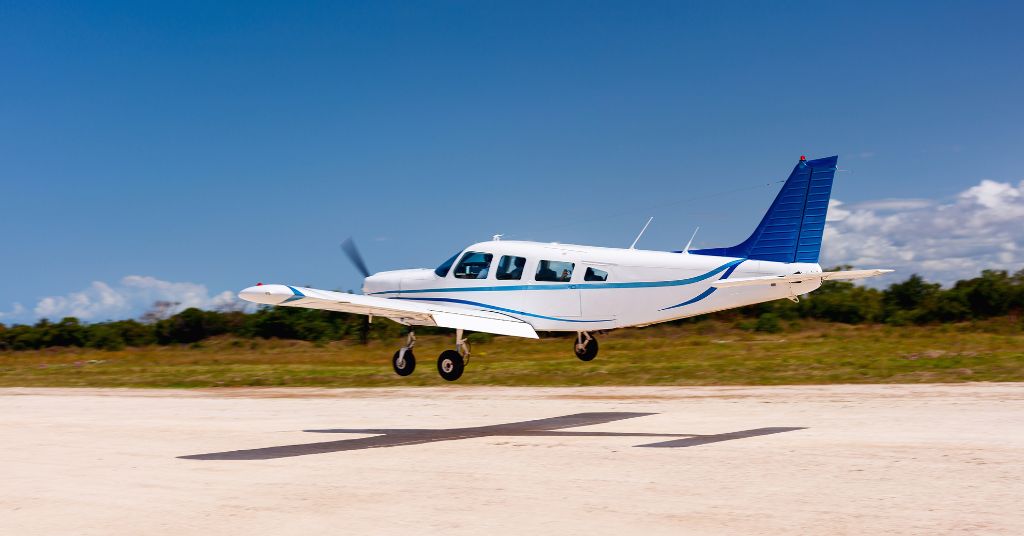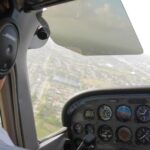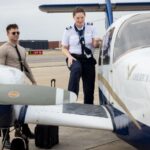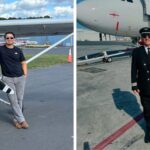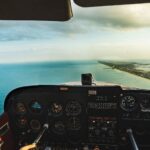Editor’s Note: Ah, the elusive perfect landing. We have all been there, right? Nice stable approach, airspeed and altitude nailed, no wind, and we are lined up with the numbers as precisely as can be. Fifty feet, twenty feet, ten feet, the swish. A small gust of wind pushes us onto the runway with a thud rather than the squeak we were expecting. We know and understand that landing an airplane is part skill and part luck. As Chris explains this month, there are a few things that we can do on the skill side of things to minimize any surprises on the luck side.
All flight maneuvers have three basic parts: the entry, the maneuver, and the recovery. In each of these parts, there are steps to follow. The thing that makes landing so difficult is that it does not appear to have any parts, just one fluid motion from the traffic pattern to the wheels touching down. So, let’s take the complicated, dynamic, fast-paced maneuver known as landing and simplify it. After all, how do you run a marathon? One mile at a time.
There are actually four parts to the landing process: the traffic pattern, the round out, the flare, and the rollout. We can say that the traffic pattern is similar to the batter’s stance in baseball in that it needs to be as constant as possible. A batter doesn’t know what kind of pitch is going to be thrown, and we don’t know exactly what the winds will do on the ground near the runway, so we need to be prepared and set ourselves up for the best possible outcome.
The traffic pattern is all about getting the airplane to the correct airspeed, with the right power configuration, appropriate flap setting, and proper attitude and altitude with checklists done; all of this before rolling out on the final. The power and attitude should be set, allowing a stabilized approach to the runway. A stabilized approach is when the airplane’s flight path is constant, meaning the airplane isn’t rising and dropping and the wings are leveled. To do this, the pilot needs to pick an aiming spot. It can be any spot on the runway that can be used as a reference. It’s a measuring stick for how constant the flight path is. With this visual reference, we can evaluate our approach. Is this aiming spot rising or lowering? Drifting to the right or left? Of course, minor corrections are needed once winds are introduced, but the flight path should be very constant.
When properly executed, the traffic pattern should bring the plane to roughly fifty feet above the runway at the proper airspeed and attitude. It is at this point that the pilot will begin to transition from a relative nose-down attitude to a nose-up attitude – this is the round out. Since the nose is beginning to be raised up, your aim spot will be blocked. The pilot needs to shift their eyes from the aiming point to further down the runway. The plane hasn’t landed yet. The pitcher has just now thrown the pitch.
The flare begins as the nose is brought up to the edge of the horizon and ends when the wheels touch the ground. The purpose of the flare is to get the main landing gear positioned to touch down first. In an ideal landing, shortly after bringing the nose up, the wheels touch down. If the wheels are not on the ground after the nose is brought up, then the plane is not ready to land yet, so either the round out was started too high, or there was too much flying energy (airspeed and attitude). In either case, these are elements that need to be controlled and fixed during the traffic pattern phase. Going back to our baseball analogy, by the time the pitch is thrown, there isn’t time to readjust your stance. So, go around and try again.
NOTE: During the landing process, you need to be very careful about changing or amending the manufacturer’s recommendations as set forth in the POH. There are many suggestions and pointers out there about airspeed on final, and while some of these suggestions may make sense or be applicable when flying a certain airplane, they might not be transferable to other airplanes. You may be taking a bad habit with you when you switch airplanes without even realizing it!
In these later phases of landing, there should be minimal time looking at the airspeed indicator. Rather, the majority of your attention should be dedicated to observing what the aim spot is doing. Changes in pitch and power should only occur based on what is being observed, not in anticipation of what you expect to happen. For example, do not lower flaps simply because you are on base leg or final. Are you fast or slow? High or low? Make the necessary adjustments to maintain the glide path accordingly.
You have flown a stabilized traffic pattern, which brought you over the numbers. You begin the round out by easing the yoke back, and you continue the correct, smooth, graceful pull of the yoke to bring the nose up. You reduce power. The wheels, smoothly and under control, lightly touch the runway. Now is the time to cheer and clap, fist pump or high five yourself, right? No! The landing isn’t over, and the plane is still “flying”! You still have to slow the plane down. Then, there’s the taxi to park the airplane and shut it down. This is the rollout. Once the engine is off and you’re out of the plane, then you can do your victory dance.
The landing process demands a lot of attention from the pilot.
It does not require strength or speed, but it does require planning, a little agility, and timing. Unfortunately, sometimes the landing is the only part of the entire flight that passengers, spotters, and friends get to watch. It’s their last impression of the flight, and it’s yours as well! You will not find nearly as many videos online of airplanes mid-flight, or the countless number of calculations, decisions, and troubleshooting the pilot must go through, but there is an abundance of landing videos out there. Make your landing video-worthy and suitable for remembering!




